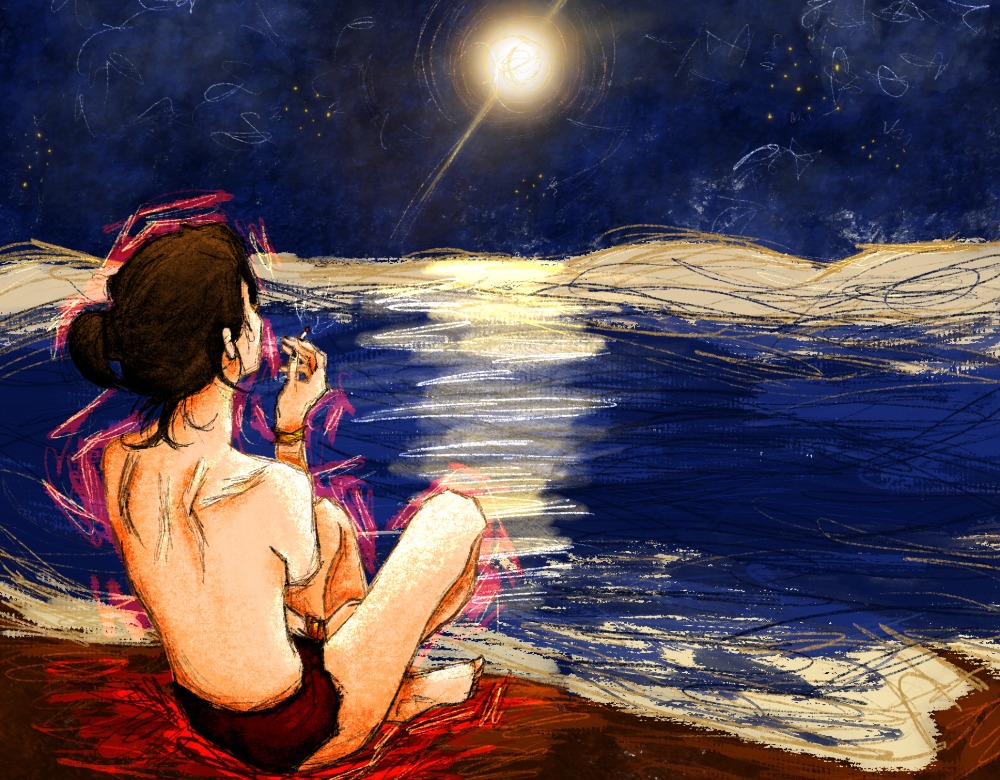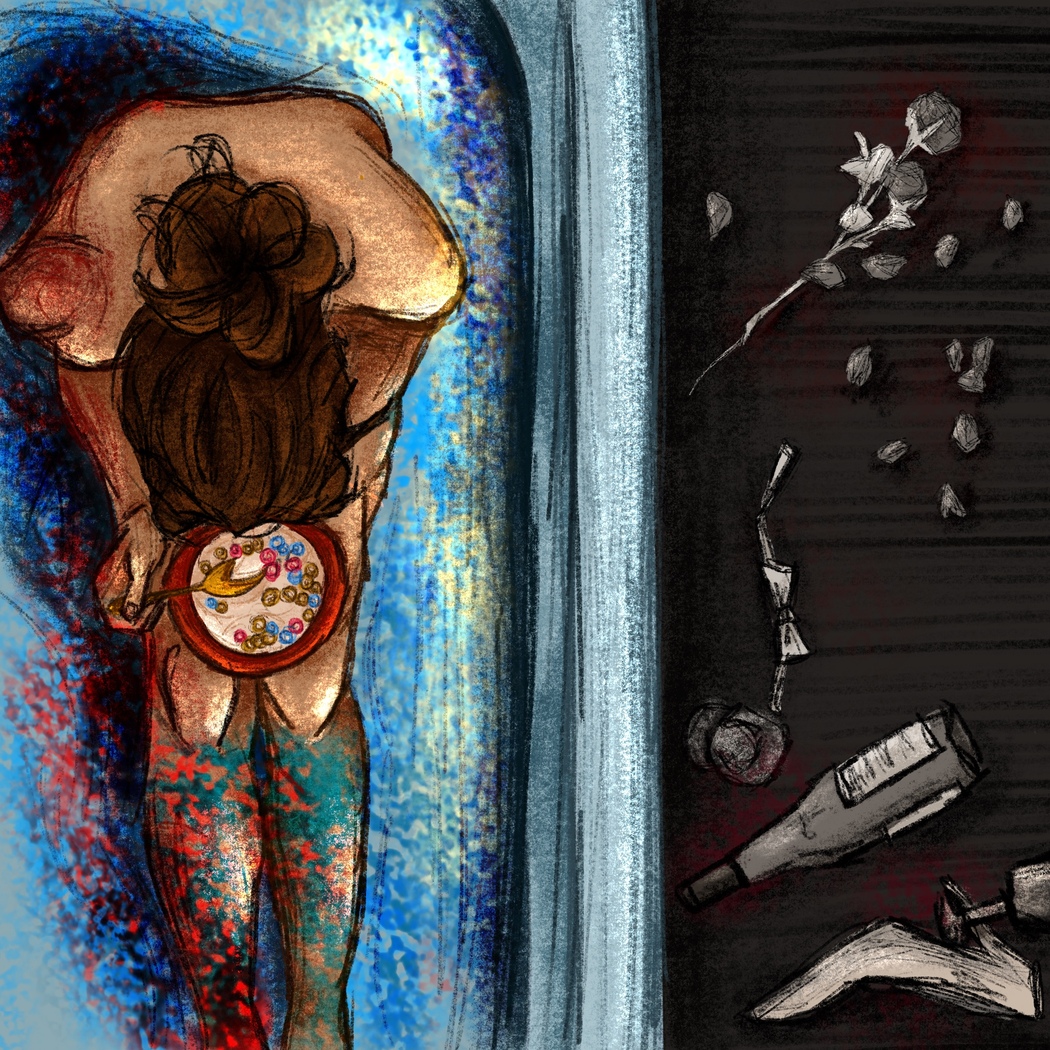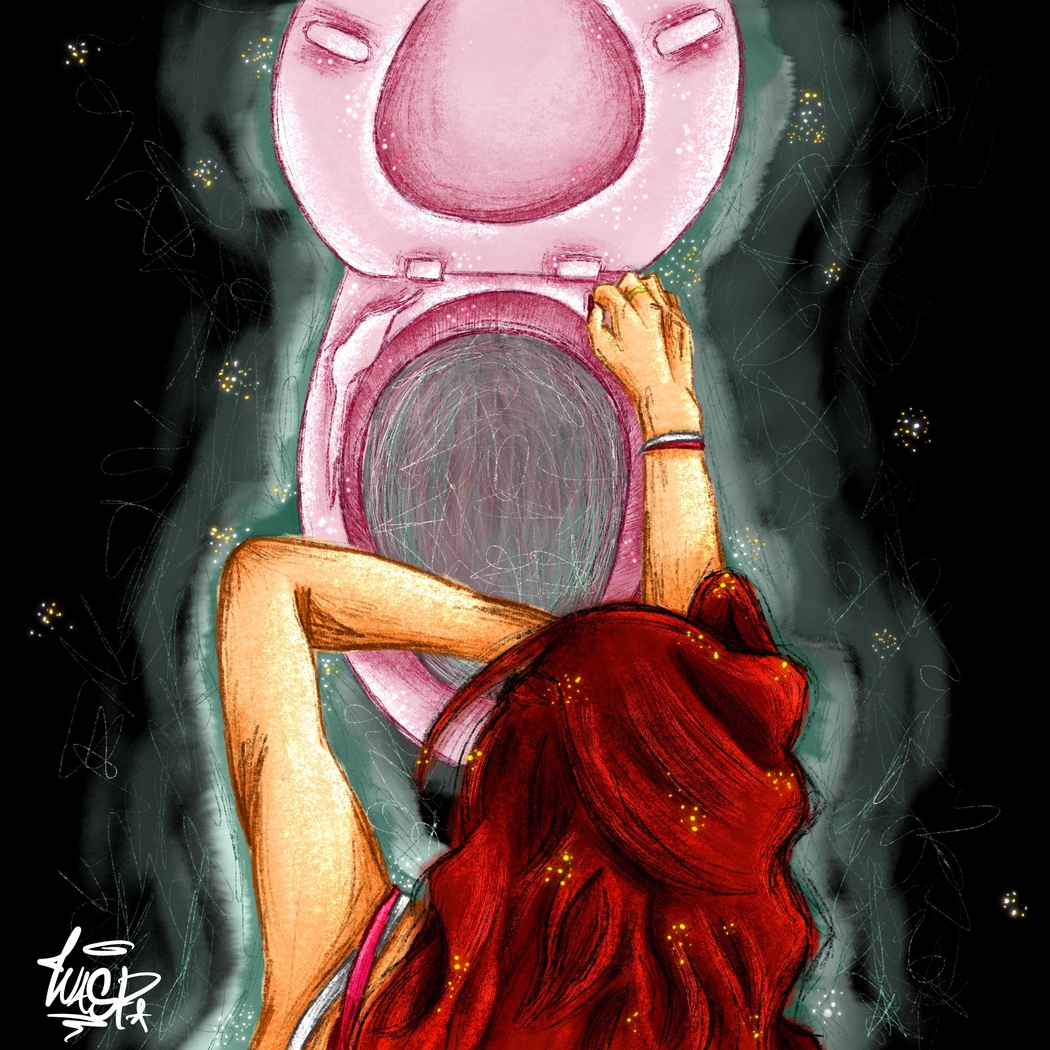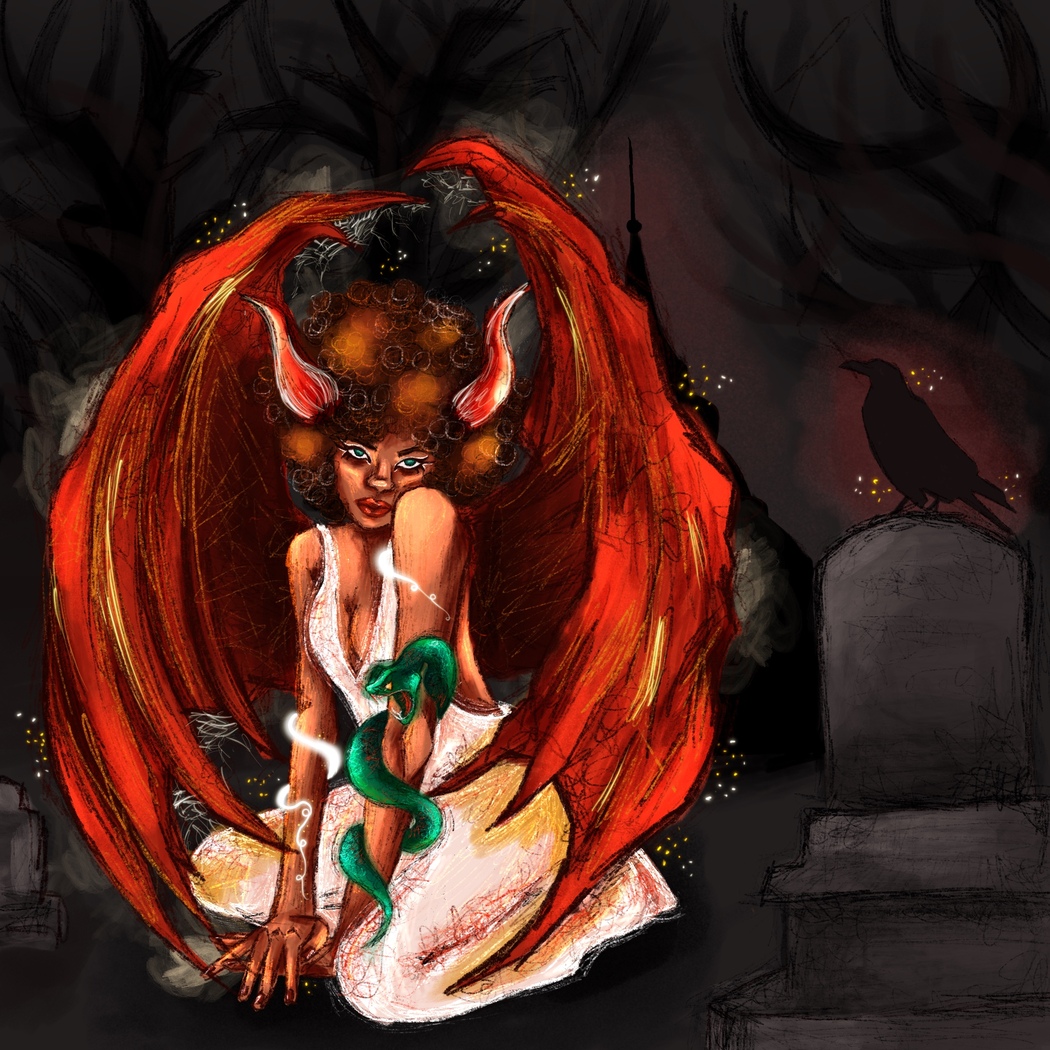Instagram
Your work often explores themes of sensitivity, self-discovery, and healing. How do these personal experiences influence your creative process?
Those themes are usually the core of my work. Emotions ,which I couldn’t explain further with my words, find their way in my art. Therefore my art is deeply personal. Each work comes from a feeling-sometimes joy, sometimes pain, and even my regrets-, the visual narrative is also built around that base emotion. I have grown to appreciate my art as a way of healing through storytelling. Previously as I felt lost in my own feelings my art was the light that led the way, I have seen that my emotions and past experiences unknowingly affect me more than I am aware. The details in my art sometimes end up even surprising me, they have shown me my deepest worries, regrets and time to time helped me notice tiny happy moments in my life that I haven’t appreciated enough at the time.
What role does digital art play in expressing emotions that might be hard to communicate with words?
Digital art offers a unique freedom, solely it allows me to make mistakes! I am aware of the prejudice against it, but once I started to layer textures, light, and colors in ways that mirror emotional complexity I knew I was in the right place. There’s no limits to my creativity, mistakes are only an another key to growth and whatever paint, brush, canvas -as long as I can imagine it- I have it. Digital brushes especially lets me create atmospheres-worlds, even- that captures my feelings without the need to explain them. To sum it all up the limitations with words are not quite binding in digital art, in addition creating new textures and canvases aren’t as nearly hard as the usage of new -fully made-up- words.

Your art has a dreamlike quality, with soft colors and gentle compositions. How do you decide on the visual language for your projects?
It is very intuitive, and often based on the core emotion of the piece. I start with a base color: red for bold feelings, baby pinks and blues for expressions of love and affection, glowing yellows for hope etc. The compositions tend to grow organically from that. The color wheel leads the way, I enhance the piece and create gentle edges by using softer shades and use intense light accordingly to create the dreamy effect, where each piece is bright. I love visual metaphors and creating a sense of stillness in chaos-in other words the surreal settings that i create-. I adore the idea of a world made of dreams, thus the colors and compositions match the idea of it.
Many of your works feature quiet, reflective moments. How do you think stillness and solitude contribute to the stories you’re telling through your art?
Stillness allows for depth. Confrontation of the parts of ourselves we usually hide, come out at those quiet moments. Our most vulnerable moments, our hidden tears , unspoken truths are all hidden in silence. I try to capture the moment right before healing, or that brief moment after a realization. The scenes I capture aren’t quite crowded or loud, instead they are everyday moments filled with emotions. I wanted to bring light to those since they are sometimes overlooked in our quick-brisk life. More important decisions are taken in silent car rides filled with emotions rather than in crowded bars full of cheers right?

What do you hope viewers take away from your art? Is there a message you want to convey through the soft, glowing worlds you create?
I hope they feel seen, I hope they feel that their emotions are valid and that they recognize their own little moments of joy, their sorrows and their fears, that they aren’t alone. Even in the darkness of their struggles, that they can focus on the light peeking from the most unexpected places, you just need to keep going to find that brightness. My message is: it’s more than okay to feel deeply. You just need to find the beauty in your sensitivity and vulnerability, even if the world around you is demanding a hard shell to cover yourself. Won’t that shell change you eventually? There are more than enough shells in this world, but you and your feelings are rare.
How has your transition from traditional art to digital media shaped your work? Are there any unique challenges or freedoms you’ve discovered?
Transitioning to digital was like unlocking a brand new dimension. The mood in my head, my feelings and every little silly thought of mine was finally captured by the endless opportunities of color and texture in digital mediums. I experimented endlessly with lights, shadows, and textures until I felt like I have found my frequency. The biggest challenge of mine is always knowing when to stop, digital acquires limitless opportunities, which can be overstimulating from time to time, learning when my work starts to speak for itself has helped me determine the finish line, lay back and think “Hey, it’s okay for this one now!”. The unique freedom for me is certainly playing around with the layers, duplicating some, making different versions of an artwork, and adjusting the story behind it with every small change.

Your art has a certain magic to it—how do you define “magic” in the context of your creative expression?
Magic is the invisible thread between emotion and image for me. I have this theory that there is this shimmer in every moment, regardless of the moment -whether it’s sad, happy etc.-. I try to capture that shimmer and keep it forever in my works. It is somehow a blink of connection, when someone looks at a piece and just clicks with it without needing to know why. I use lighting, bold and bright colors combined with contrasts in order to capture the said magic. It is the alchemy ,not to obtain gold for once but rather to obtain something shared from internal worlds.





Leave a Reply